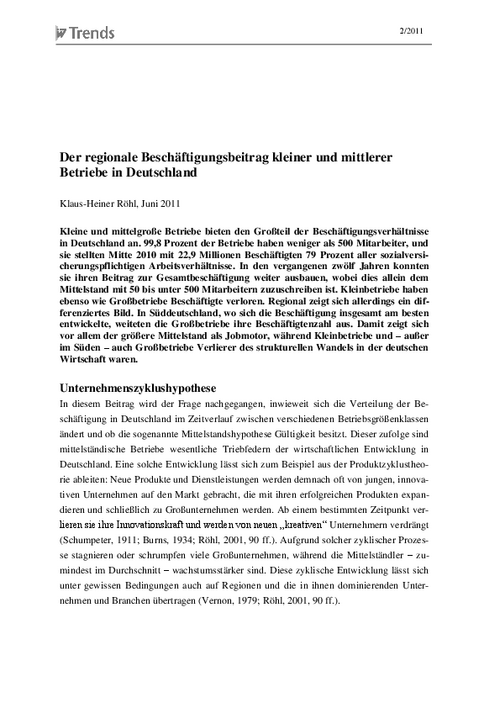A vast majority of all jobs in Germany are offered by small and medium-sized firms. 99.8 percent of all companies have fewer than 500 workers. With 22.9 million employees they represented 79 percent of all jobs liable to payroll tax in 2010. Over the last twelve years this share has even increased thanks to firms with 50 to 500 employees. At the same time, companies with fewer or more workers have cut their workforce. Overall employment in Germany was slightly higher in 2010 than in 1999, the base year chosen for this analysis. After a sharp drop until 2005, employment picked up by about 1 percent annually in the second half of the decade. On the regional level the situation was mixed, with employment falling sharply in East Germany and rising in the southern and northern regions. Contrary to the nationwide trend, big firms in South Germany have built up their workforce. Nevertheless, the analysis clearly shows that medium-sized enterprises were the driving force for job creation in all regions while small businesses and – except in the South – big firms are the losers of structural change
Download | PDF


